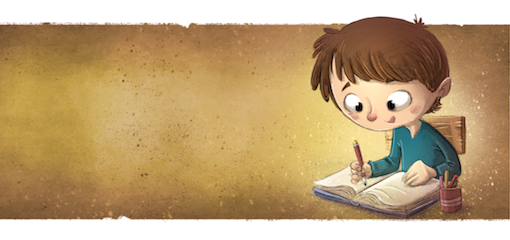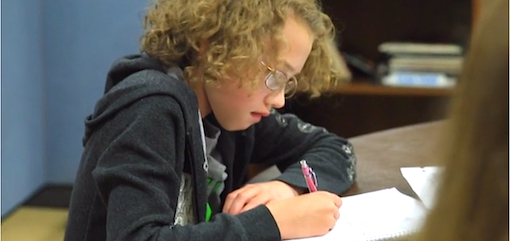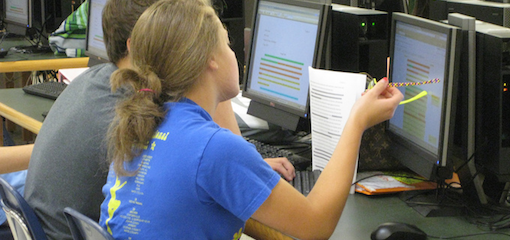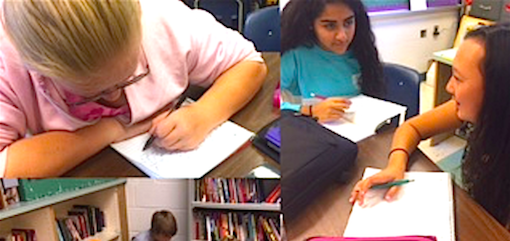12 Great Reads for the National Day of Writing

Let’s start with our most-read writing advice, contributed by teaching consultant and author Regie Routman.
10 Quick Ways to Remove Writing Roadblocks
Literacy expert Regie Routman takes teachers for a ride and demonstrates how to avoid roadblocks that make writing less than doable, effective and gratifying. The destination? Classrooms where students routinely write to think, problem solve, create and explore.
3 Fun Activities That Will Keep Kids Writing
Writers get better by writing, says author and ELA teacher Marilyn Pryle. “It’s our job to have students write regularly, genuinely, and with ownership.” She shares three fun writing tasks (including directions, a model and a prewrite activity) that get the job done!
Make Writing a Daily Ritual in Every Subject
Students who write in class every day become more skillful at expressing what they feel and what they are learning, says NBCT and writing project leader Mary Tedrow. Using quality prompts that connect content and personal experience helps students “write their way to an understanding of curricula.” Also see Tedrow’s post about using daybooks to promote student writing.
Poetry Writing Made Fun: 10 Cool Teaching Ideas
Over the years Cheryl Mizerny has crafted poetry experiences that her students really enjoy. Her reading and writing ideas enable kids to understand poems without dreading the annual “poetry unit” she herself disliked as a tween. She shares 10 of her favorites. And see more poetry ideas here!
The Wisdom We Gain by Writing with Students
Middle grades teacher Mary Tarashuk remembers Madeline Hunter’s simple wisdom and considers the teaching power that comes from writing along with her fourth graders.
Teaching Students to Write about Contraptions
Kevin Hodgson’s sixth graders experience systems thinking when they explain Rube Goldberg contraptions, design interactive stories, and diagram sports plays. Hodgson offers many examples of student work and shows how the approach addresses Common Core objectives.
5 Ideas to Make Writing More Fun to Teach
Consultant Jen Serravallo often hears teachers say they’re uncomfortable teaching writing. Her solution: promote student engagement and independence. As kids become more excited, she says, “that enthusiasm will spill over to you.” Here are five ideas to get started.
“How I Finally Figured Out Collaborative Writing”
Despite her strong commitment to 21st century collaborative learning, Amber Chandler admits she’d “always held back from allowing my students to work together on their writing.” Would everyone be engaged? Could it be graded? Then her kids showed her the way.
Use Multimedia Writing to Change the Game
When students blend multimedia elements into their writing projects, interest and engagement can zoom up, writes teacher-author Sean Ruday. Ruday highlights a five-step process he uses in PD workshops to help teachers make the tech meaningful and not maddening.
Teachers: Time to Give Up the Red Pen
Young writers will blossom when teachers trade in their red pens for an appreciative approach to feedback, says consultant Patty McGee. As writing mentors, teachers help students achieve quality writing with originality, voice, and style. McGee includes more than a dozen teaching tools. (Also see Patty’s latest post “Put Yourself in the Shoes of a Middle Grades Writer”.)
Tools to Teach Writers to Distinguish Evidence
Using evidence to support arguments is challenging for many young writers. As Sarah Tantillo continues her search for ways to teach this critical skill, she shares a tool to help students distinguish between perfect and imperfect evidence and learn to use both.
Class Podcasts: Listening to Student Writers
Several years ago 8th grade teacher Brian Kelley began publicly podcasting conversations with his student writers. Through conferring, he says, teachers let adolescents know that their voices matter “and their explanations can make us better teachers.” Kelley shares three samples.





































Thanks to all these writers for their contributions! Regie Routman, Marilyn Pryle, Mary Tedrow, Sean Ruday, Kevin Hodgson, Cheryl Mizerny, Amber Chandler, Jen Serravallo, Mary Tarashuk, Brian Kelley, Patty McGee and Sarah Tantillo.
Be sure to explore our book reviews and discover some memorable advice on teaching students the dynamics of write/think/learn.
This quote from Marilyn Pryle’s article (above) gets at the heart of good writing instruction:
“When students write often and with purpose, they also grow as thinkers and as human beings. They discover not only their thoughts but themselves.”